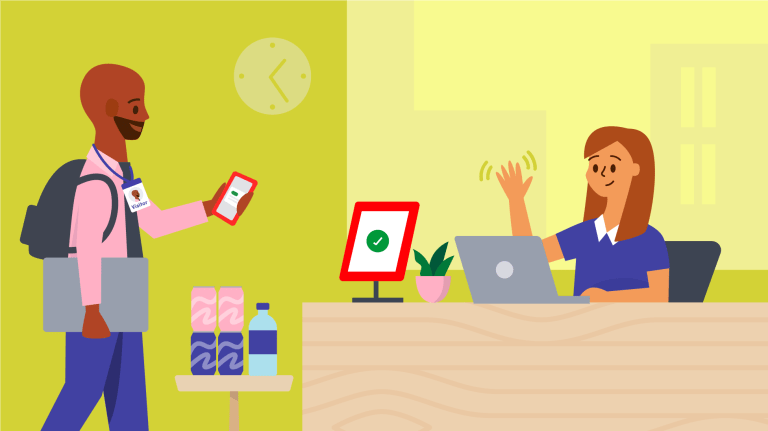Table of Contents
ToggleIn today’s fast-paced and interconnected world, the seamless management of visitors within workplace environments is paramount for ensuring security, productivity, and a harmonious operational flow. A robust visitor management system is the cornerstone of these efforts, encompassing tools and protocols designed to regulate and monitor the influx of guests, contractors, and vendors entering organisational premises. As workplaces adapt to accommodate evolving work arrangements and heightened security concerns, the significance of effective visitor management cannot be overstated. This article looks into the multifaceted importance of visitor management in modern workplaces, exploring its role in enhancing security, streamlining visitor experiences, harnessing data-driven insights, ensuring regulatory compliance, and integrating seamlessly with broader security infrastructure.
Enhanced Security Protocols
Implementing robust security protocols is essential for safeguarding employees, assets, and sensitive information in an era characterised by escalating security threats and stringent regulatory requirements. A comprehensive visitor management software gives organisations the tools to establish and enforce strict security measures. Organisations can mitigate risks associated with unauthorised access and potential security breaches by requiring visitors to undergo identity verification, registration, and credentialing processes. Advanced features like biometric authentication and real-time monitoring further bolster security efforts, enabling proactive threat detection and swift response to security incidents. Moreover, integrating access control mechanisms and visitor tracking capabilities enhances visibility and control over visitor activities within organisational premises, facilitating rapid identification and resolution of security breaches. By investing in robust security protocols, organisations demonstrate their commitment to safeguarding personnel and assets, fostering a secure and resilient workplace environment.
Streamlined Visitor Experience
A well-designed visitor management software simplifies check-in procedures, minimises wait times, and provides clear directions to designated areas, enhancing the overall visitor experience. With the advent of digital platforms and mobile applications, modern solutions offer self-service options, enabling visitors to pre-register, receive digital badges, and access relevant information remotely. Prioritising convenience and efficiency elevates the visitor experience and fosters lasting relationships with clients, partners, and guests. Organisations are constantly looking for strategies to create a positive impact on their visitors and customers. One such strategy is the implementation of personalised welcome messages and tailored experiences that can significantly enhance the sense of hospitality and professionalism.
Organisations can leverage the power of analytics and data to gain insights into visitor behaviour, preferences, and feedback and use this information to create a more tailored and engaging experience. Creating a welcoming environment is not only essential for the visitors, but it also reflects positively on the organisation’s brand. By providing a personalised experience and catering to each visitor’s unique needs, organisations can establish themselves as customer-centric and professional and build a loyal customer base. Moreover, a welcoming environment can also increase productivity and employee satisfaction, as visitors feel more comfortable and relaxed in the work environment.
Data-driven Insights and Analytics
Organisations leverage visitor management systems in an era driven by data to gather valuable insights into visitor demographics, behaviour patterns, and preferences. Organisations can better understand their audience, identify trends, and optimise resource allocation by capturing and analysing visitor data. Data analytics enable organisations to measure the effectiveness of marketing initiatives, event attendance, and facility utilisation, informing strategic planning and decision-making processes. Data-driven insights can enhance a company’s operational efficiency, drive decision-making, and help it evolve with market trends.
Compliance and Regulatory Adherence
Steering the complex regulatory landscape governing workplace security and visitor access requires diligent adherence to compliance mandates and industry standards. Robust visitor management software helps organisations achieve regulatory compliance by implementing features such as access control, visitor screening, and audit trails. By demonstrating compliance with regulatory requirements, organisations can mitigate legal risks and protect against potential penalties or fines. Automated record-keeping and documentation facilitate compliance reporting and regulatory audits, providing organisations with the necessary documentation to demonstrate due diligence and regulatory adherence.
Integration with Overall Security Infrastructure
Effective visitor management is not an isolated function but an integral component of an organisation’s broader security infrastructure. Seamless integration with existing security systems like access control, surveillance cameras, and alarm systems enhances the efficacy and responsiveness of visitor management processes. Real-time communication and data sharing between disparate systems enable comprehensive threat detection and incident response capabilities. By fostering interoperability and synergy among security technologies, organisations can create a cohesive security ecosystem that offers extensive protection against evolving threats and vulnerabilities.
Conclusion
In conclusion, the importance of visitor management in today’s workplace cannot be overstated, given its critical role in enhancing security, optimising operational efficiency, and ensuring regulatory compliance. A robust visitor management system is the linchpin of organisational security infrastructure, providing enhanced security protocols, streamlined visitor experiences, data-driven insights, regulatory adherence, and seamless integration with broader security systems. Organisations prioritising visitor management can mitigate security risks, enhance operational efficiency, and cultivate positive relationships with external stakeholders. Adopting comprehensive visitor management systems as workplaces evolve remains paramount in safeguarding organisational assets, personnel, and reputation.




